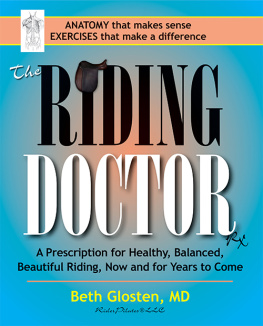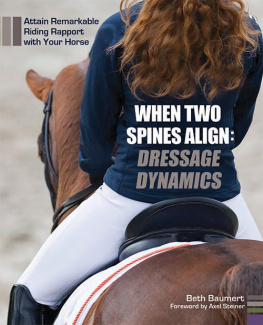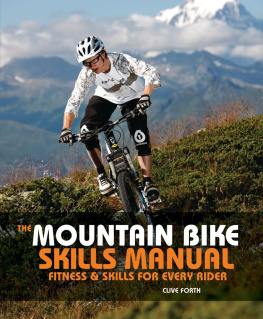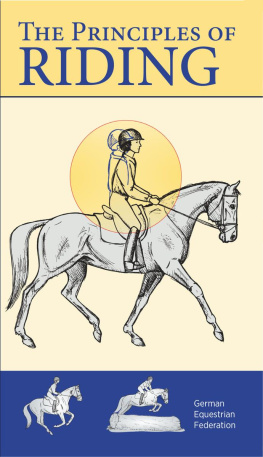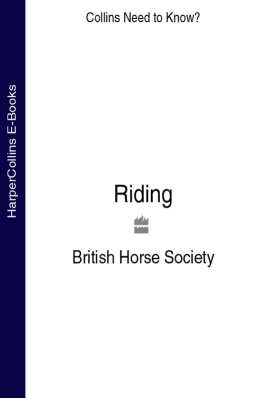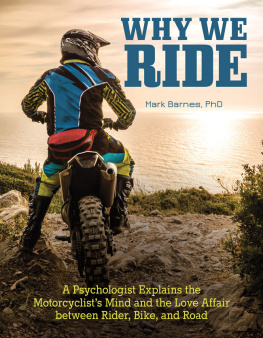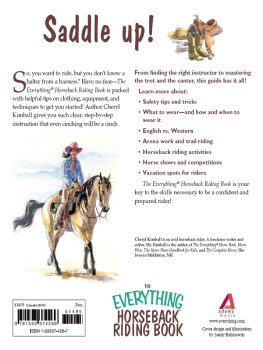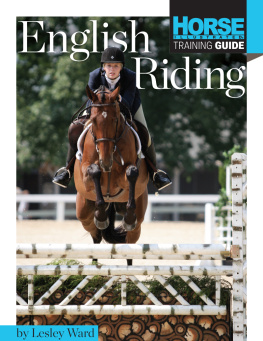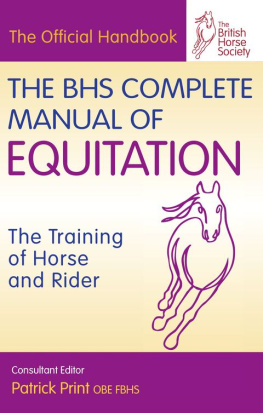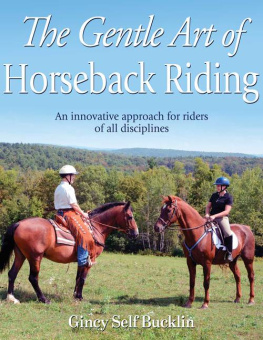The skill of Mental Focus will also maximize the benefit of all of the exercises in this book. Use your awareness to feel your body during the movements. Embrace the purpose of the exercises and carry the connections they confer in your body into the saddle. Extensive skills of posture and body control get lost if they are not on your mind when you ride! Your riding will benefit when you constantly consider the organization of your body; you will better perceive how your horse moves and can make subtle corrections to his way of going.
Your horse requires you to be his leaderI like to call this role benevolent alpha, that is, you are clearly in charge, and do so in a nice way and a clear way. This optimizes training. Without a commitment to your leadership role it is impossible to communicate clearly with your horse. At best, your vague aids result in a dull horse, disinterested and unaffected by your unfocused attempt at communication. At worst, you fall into an unhealthy posture and repeat ineffective and unbalanced riding habits, or your horse, sensing the lack of a clear leader, becomes dangerous and spooky, taking over and concerning himself with distractions and events unrelated to you or the ride.
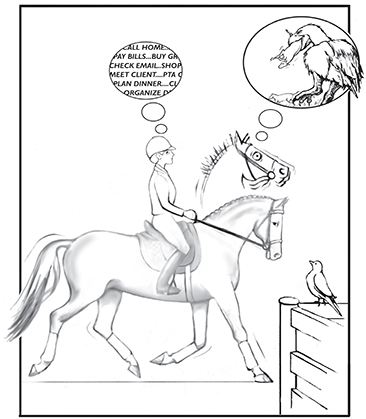
A lack of focus on every step of the ride leads to an unfocused and distracted horse.
Finding a clear mindset is not always easy. Work stresses, family needs, and other responsibilities conspire to divide your attention during a ride. When you settle in the saddle, you owe it to your horse and yourself to quiet the chatter in your head and commit all your energy to the ride. From this place you can fill the role of a guide who assesses every step. For this purpose, I have developed the 10-minute pre-ride set of exercises listed at the end of the book (p. 203). I designed this short series of simple exercises to get you out of your head and into your body before you sit in the saddle. These set you up for positive focus on your body position and function, and how you interface and interact with your horse.
Coordinate Your Breathing with Movement
On those days when stress makes it difficult to focus, take some time to settle before you get on your horse. Review your breathing once you are in the saddle (see the bring you back to your body and your horses movement. If this fails to shift you into a good riding mindset, make a note of it. Dont flog yourself; either reduce expectations or go for a trail ride!
Coordinating your breathing with movement promotes mental focus on any physical activity, whether your exercise workout, work around the house, or riding. When stressed for time, or in the electric and tense environment of a horse show, this breathing technique helps me to slow down and make sure my mind and body are on the same task: It is balancing, organizing, settling and it prepares me for the next exercise or movement. Because of my previous back injury, I use it before I get in my car or lift a bag of groceries, my horses saddle onto her back, or a bucket of water. The preparatory and organizing feature of this breathing is why I call it the riders half-halt (I use the same technique when riding a half-halt on the horse).
Rib cage breathing is active, balancing, and energizing. It involves a lateral and outward expansion of the rib cage while breathing in (inhaling), and a drawing in of the deep abdominal muscles toward a stable spine while breathing out (exhaling). It is the exhalation phase of the breathing that promotes balance and support, as it activates and directs your focus to the deep muscles of your lower abdomen and back so they are on and ready to support you during movement. Directing the inhale breath to the rib cage allows you to keep this core muscle support while you inhale.
This makes rib cage breathing different from the relaxing belly breathing, which involves a release of the abdominal wall as you breathe in. Breathing into the rib cage, rather than releasing your abdominal muscles, allows core muscle support to be maintained during inhalation. In belly breathing, the relaxation of your core muscles with the inhale breath reduces support of your body and is therefore less suitable during activity.
EXERCISES to Coordinate Breathing with Movement
Rib Cage Breathing 1
Learn rib cage breathing while you are lying on the floor. This position helps you feel whether or not the bones of your spine move while you breathe. The alignment of your spine should not change.
Lie on your back on a mat or towel, knees bent, feet flat on the floor hip-joint width apart.
Take in a normal breath. As you exhale, let your rib cage drop slightly toward the pelvis, and gently and carefully pull in your abdominal muscles. This movement should feel fluid, not braced (this takes practice). Place your hands on your lower abdomen to feel that the muscles scoop inward. Avoid pressing your abdominal muscles outward, causing a braced feeling in your lower abdomen. This inward movement of the abdominal muscles should not move bones: Your lower back should not press into the floor. Your rib cage should not push off the floor. Your spine and pelvis bones should not move.
With each inhale breath, work to expand the lower, posterior part of your rib cage, but dont let your upper chest rise up. Keep your abdominals scooped in.
With each exhale breath, feel your focus and energy concentrate in the lower abdomenin your center.
If you are having trouble keeping your abdominals scooped in as you breathe in, place your hands on the sides of your ribs. As you inhale, imagine your ribs swinging outward, or laterally, toward your hands. In fact, this is the way ribs are intended to move: like a bucket handle swinging out to the side as you breathe in. When done correctly, rib cage breathing should feel as if you are creating your own elastic corset of torso support. The engagement of your deep abdominal and back muscles should create a feeling of the rib cage and pelvis being elastically connected and knitted together.
Rib Cage Breathing 2
Having mastered rib cage breathing lying down, youll now review it in a much more practical positionsitting upright!
Sit upright in a chair or on an exercise ball, feet flat on the floor, hip-joint width apart. Align your body so that your shoulders are over your pelvis (see more on this in ).
Wrap a towel or a stretch resistance band around your midsection, cross it in front of your body, and hold one end in each hand (fig. 1.1). (If you dont have a stretch band, you can use your hands instead: Place one hand on your abdomen and one hand on your back.)

